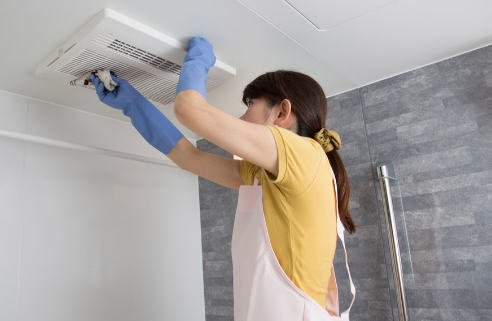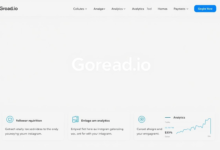How Poor Furnace and Duct Maintenance Affects Your Health

When it comes to home maintenance, most homeowners think about cleaning floors, fixing leaky faucets, or mowing the lawn. Yet one of the most overlooked areas is also one of the most critical for health: your furnace and duct system.
Your furnace is responsible for heating your home, while the ducts distribute that air throughout every room. Over time, if these systems aren’t maintained properly, they accumulate dust, dirt, allergens, mold, and even pest debris. Every time the system runs, those contaminants circulate through the air you breathe.
The consequences of poor furnace and duct maintenance go far beyond higher energy bills—they can directly and negatively affect your health. In this article, we’ll explore the connection between neglected HVAC systems and common health issues, plus steps to protect your family.
The Role of the Furnace and Ducts in Indoor Air Quality
Think of your HVAC system as the lungs of your home. Just as our lungs filter the air we breathe, furnaces and ducts regulate the air quality indoors. But unlike human lungs, your HVAC system can’t heal itself—it requires regular maintenance to stay clean and efficient.
When filters clog, ducts fill with debris, and the furnace becomes coated in dust, the system starts blowing pollutants into your living space. Since most people spend 80–90% of their time indoors, this contaminated air can lead to serious health concerns.
Common Contaminants in Poorly Maintained Systems
Dirty furnaces and ducts can harbor a wide range of contaminants:
- Dust and dirt that reduce air cleanliness.
- Pet dander that triggers allergies and asthma.
- Pollen carried indoors during seasonal changes.
- Mold spores caused by moisture buildup inside ducts.
- Bacteria and viruses that thrive in damp, dirty systems.
- Pest debris such as rodent droppings or insect remains.
- Chemical particles from household cleaners and paints that cling to dust.
Breathing in this cocktail of pollutants every day can take a toll on your respiratory and overall health.
Health Impacts of Poor Furnace and Duct Maintenance
1. Respiratory Irritation
One of the most immediate effects of dirty ducts is respiratory discomfort. Dust and debris circulating in the air can cause:
- Coughing and wheezing
- Shortness of breath
- Throat irritation
- Chest tightness
Even people without preexisting conditions may feel these symptoms, especially in winter when heating systems are constantly running.
2. Allergies and Asthma Flare-Ups
For allergy sufferers, dirty air ducts are a nightmare. Pet dander, pollen, and dust mites thrive in neglected systems. Every cycle of the furnace pushes these irritants into the air, worsening:
- Sneezing
- Runny nose
- Itchy eyes
- Sinus congestion
For people with asthma, the consequences are more serious. Mold spores and dust can act as triggers, causing frequent asthma attacks and requiring more medication use.
3. Increased Risk of Infections
Poor furnace and duct maintenance can encourage the growth of bacteria and viruses. When these microbes circulate through the air, they can increase the risk of:
- Respiratory infections
- Bronchitis
- Flu-like symptoms
This is particularly concerning in households with children, the elderly, or individuals with weakened immune systems.
4. Mold-Related Illnesses
Moisture inside ducts or around the furnace creates the perfect environment for mold. Inhaling mold spores can cause:
- Chronic sinus infections
- Headaches
- Skin irritation
- Severe allergic reactions
Long-term exposure has even been linked to more serious conditions, such as chronic inflammatory response syndrome (CIRS).
5. Headaches and Fatigue
Dirty ducts don’t just affect the lungs—they can also impact overall well-being. Poor indoor air quality has been associated with headaches, dizziness, and fatigue. Many people mistake these symptoms for stress or dehydration, when in reality, their HVAC system is to blame.
6. Carbon Monoxide Risks from Poor Furnace Maintenance
Beyond ducts, the furnace itself poses health risks when neglected. A poorly maintained furnace can develop cracks or blockages in the heat exchanger, leading to carbon monoxide leaks. Carbon monoxide is a deadly, odorless gas that can cause:
- Nausea
- Dizziness
- Confusion
- Loss of consciousness
- Death in severe cases
This is why annual furnace inspections and maintenance are critical—not only for efficiency but also for safety.
7. Worsened Symptoms for Vulnerable Populations
Children, seniors, and individuals with chronic health conditions are most at risk. Their immune systems are either underdeveloped, weakened, or compromised, making them more susceptible to poor indoor air quality. For these groups, clean air isn’t a luxury—it’s a necessity.
Signs Your Furnace and Ducts Are Affecting Your Health
Wondering if your HVAC system is to blame for ongoing health issues? Watch for these clues:
- Your symptoms (allergies, coughing, fatigue) improve when you leave home.
- Dust quickly accumulates on furniture despite frequent cleaning.
- Musty or foul odors come from vents when the furnace runs.
- Family members suffer frequent colds or respiratory infections.
- You notice inconsistent airflow or hot and cold spots in the home.
These signs indicate your furnace and ducts may need professional attention.
Best Practices to Prevent Health Issues
The good news is that maintaining your furnace and ducts can significantly reduce these health risks. Here are best practices to follow:
1. Change Filters Regularly
Replace furnace filters every 1–3 months during heavy use. High-efficiency particulate air (HEPA) filters capture finer allergens and pollutants.
2. Schedule Professional Duct Cleaning
Most homes benefit from duct cleaning every 3–5 years. However, if you have pets, allergies, or notice visible debris, schedule cleanings more often.
3. Maintain the Furnace Annually
An annual furnace tune-up ensures the blower motor, heat exchanger, and other parts are clean and functional. This reduces breakdowns and prevents carbon monoxide leaks.
4. Control Moisture
Keep indoor humidity between 30–50% to discourage mold growth. Use dehumidifiers if necessary and repair leaks promptly.
5. Keep Vents Clear
Don’t block vents with furniture or rugs, as this reduces airflow and can cause dust buildup.
6. Improve Ventilation
Whenever weather allows, open windows to circulate fresh air. Use kitchen and bathroom fans to reduce moisture buildup.
DIY Maintenance vs Professional Care
Homeowners can do their part by:
- Vacuuming vent covers and returns.
- Keeping the furnace area free of dust and clutter.
- Monitoring for unusual odors or noises.
But for deep cleaning and safety checks, professionals are essential. They use industrial vacuums, rotating brushes, and antimicrobial treatments to clean ducts thoroughly. Furnace technicians can inspect for cracks, leaks, or dangerous gas emissions.
Read Also: Matthew Klinker’s FDA Inspection Style: Key Takeaways for Pharma Firms
Cost of Neglect vs Cost of Maintenance
Neglecting furnace and duct maintenance can be expensive in the long run:
- Higher energy bills from inefficient systems.
- Medical costs from ongoing health issues.
- HVAC repairs or premature system replacement.
By contrast, investing in routine maintenance—typically $300–$700 for duct cleaning and $100–$200 for annual furnace service—pays off in both savings and peace of mind.
Case Example: A Family’s Health Turnaround
Consider a family who suffered frequent allergy flare-ups and colds every winter. After an inspection, technicians discovered significant dust buildup and mold growth in their ducts. A professional cleaning, combined with a new furnace filter system, dramatically improved their symptoms within weeks.
This real-world example illustrates just how directly HVAC maintenance can affect health and quality of life.
Conclusion
Poor furnace and duct maintenance doesn’t just strain your HVAC system—it directly impacts your health. From respiratory irritation and allergy flare-ups to mold exposure and carbon monoxide risks, the consequences can be serious.
The good news is that with regular filter changes, annual furnace servicing, and professional duct cleaning and furnace cleaning every few years, you can ensure your home’s air is safe and healthy.
Your HVAC system is the unseen guardian of your indoor environment. Treat it well, and it will return the favor by keeping your family comfortable, safe, and breathing easier for years to come.







